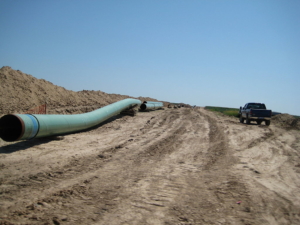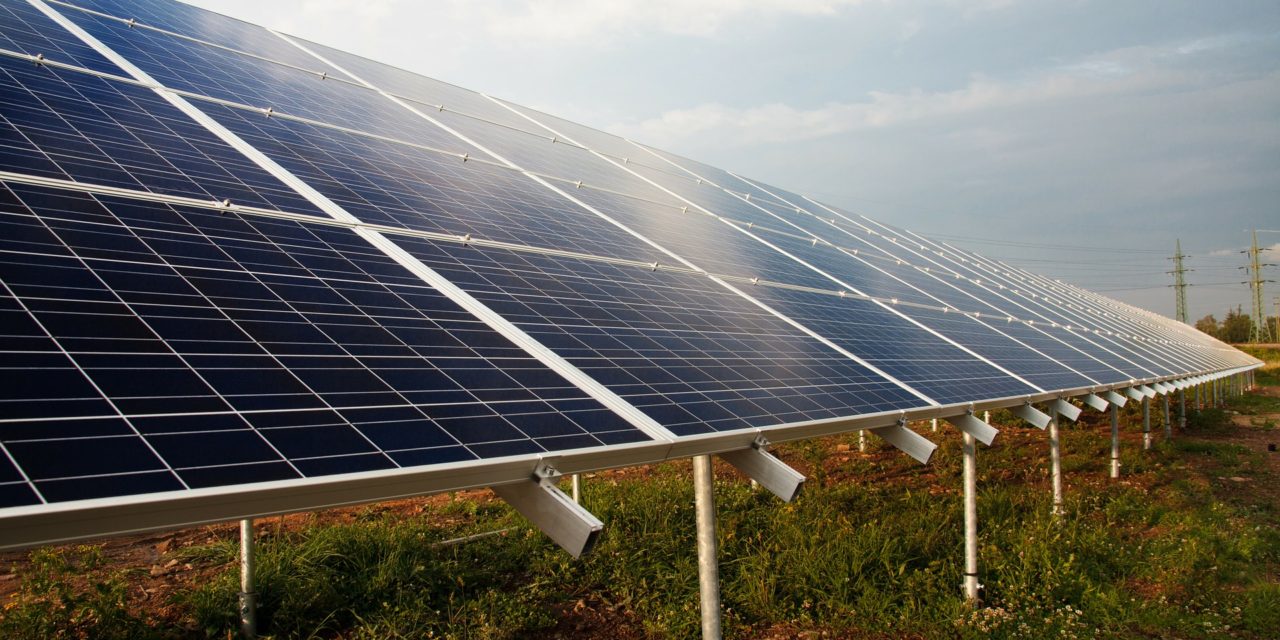
Pipes like this will be used in the proposed Keystone XL Pipeline. Photo by Shannonpatrick17. Used through CC BY 2.0 , via Wikimedia Commons
Most protest accessories are simple: poster board, some markers, and maybe a piece of wood to attach the sign to hold it above the heads of a crowd. As technology has progressed, protests have added an online element with social media.
But in the battle to stop the Keystone XL Pipeline from being completed, opponents have found a new way to not only protest the project, but also to add value to their property. Property owners along the proposed route have begun installing solar panels on their land, in an attempt to make the eminent domain case against them more difficult.
The idea is that TransCanada, the company behind the proposed pipeline, would not only have to take the land, but it would also have to remove the solar panels along the route, cutting clean power from the local energy grid and possibly affecting the local jobs market if the installers and maintainers of the panels lose their jobs.
“At least one study by the Lawrence Berkeley Laboratory (LBL), from 2015, has shown that there is a premium for homes with solar panels compared to homes without the panels. In fact, for a five kilowatt (kW) system, the LBL study suggests that each watt of solar adds about $4 to a home’s value in California. So, a home with solar panels in California, on average, would sell for $20,000 more than a home without solar panels, ceteris paribus.”
However, solar panels are not the only way protesters are finding new ways to attack the eminent domain claims by TransCanada. In Pennsylvania, The Adorers of the Blood of Christ constructed a chapel along the route. One opponent of the pipeline summed up the nuns’ views on the pipeline and its path, saying, “It’s not about money, it’s about principle. And the nuns have a land ethic that says this Earth is a sanctuary and we regard it as sacred, and we’re going to work to protect it.”
Whether acts like the solar panels or the chapel are successful remains to be seen. However, regardless of the outcome, the additions have increased the value of the properties.
“At the end of the day, solar panels boost property values, although research suggests that the effects are heterogeneous throughout the country” Dr. Lipscomb said. “It will be interesting to see whether these types of projects are enough to strategically derail the pipeline and whether others follow suit in future disputes.”
Follow our blog for updates on this and other stories in our industry.






Recent Comments